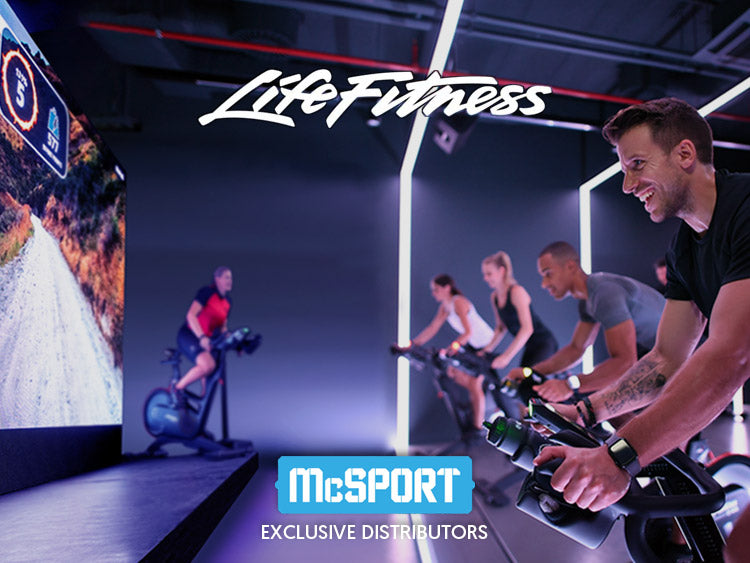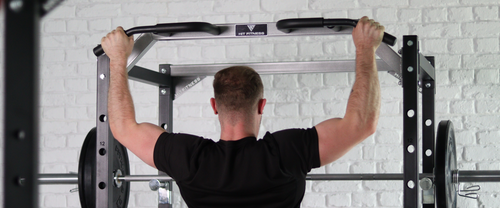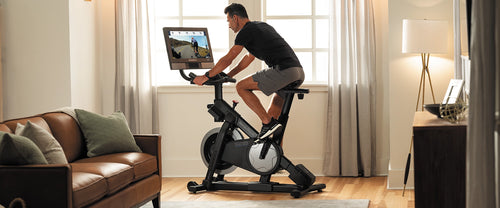First though, here are a few terms to keep in mind before purchasing a barbell or weight bar.
Weight Bars Glossary

Before getting a barbell or weight bar, it is best to learn some of the terms that come with them. These are niche terms that are used by the weight lifting community and retailers. Here is a small glossary that will help you when you are looking:
Tensile: The tensile of the barbell means how much weight it can take before breaking. Make sure you get one with the right tensile, otherwise there is a chance it will snaps. Some bars may state the max load weight instead of tensile weight—they are the same.
Yield: How much weight you can load onto the bar before it bends. Once your barbell is bent, there is no going back, so make sure to note it.
Whip: The whip refers to how flexible a barbell is. If it is high, it will be flexible; if it is low, it shouldn’t move. For specific exercises, having a low whip is best as it offers stability.
Spin: This is how much the bar rotates when you hold it. A clean and press, for instance, will require a lot of spin so that you don’t injure your wrists.
Knurling: This may be the most common phrase heard with weight bars. This term is used to describe the grips of the weight bar. Make sure that the knurling on the bar isn’t extensive, as that can do just as much damage as too little knurling.
Bolts/Spring collars: These are the items that secure the end of your weight bar. It is often down to preference but keeps in mind that bolts will need to be tightened while spring collars stay in the one place.
Types of Weight bars
Now that we have the tips and general terms, it’s onto the weight bars and which one suits you better.
Barbell

The most popular choice for weight lifting is the barbell. There are different options to choose from with this, but the best one is the Olympic barbell. They come in two different lengths—6-foot and 7-foot. These barbells have a standard weight of 20kg and typically hold between 500-600kg.
There is a spin on these barbells as they are necessary for the exercises and protect the wrist. The knurling will be light but have enough that you can get a good grip on the bar.
Pump Set

Pump sets are another option to choose from. These bars come with a rubber coating for better grip, and the plates are squared so that they don’t roll when on the floor. These are perfect for workouts such as front squats, back squats, thrusters, and hip thrusters.
Hex

This bar is perfect for someone with poor hip mobility with the added benefit of it being easier to set up. It is made up of a hexagonal shape and is excellent for the deadlift. As you step into the bar, instead of having it in front of you, it will be to the side, which is less pressure on your back. This helps during the deadlift and will still work your legs and glutes.
Open Hex Bar

The open hex bar is like the hex bar but with one side open. It allows you more flexibility with your exercises and gives you the option of doing lunges with the hex bar. Having an open hex bar is also suitable for learning the correct deadlift form and trap shrug technique.
EZ Curl Bar

The EZ curl bar is shaped so that holding different angles of the bar will target different muscles. It also benefits anyone that needs added support on their wrists as the turned edges give a more natural joint alignment.
Safety Squat Bar

Using the squat safety bar protects your shoulders as the safety arms rest on your shoulders and come out either side of your face so that you can grab them instead of reaching behind.
Swiss Bar

The Swiss bar is ideal for anyone that has trouble with their wrists or shoulders. The neutral grip on this bar has various widths, so you don’t have to strain during your workout, and it gives you more variety when targeting specific muscles. This bar is perfect for skull crushers, overhead presses, and hammer curls.
Final Thoughts
Choosing the right weight bar can be a confusing experience. Even though the barbell may be the most popular, it's important to know that you can achieve the same workout with other weight bars.
We hope that this guide has given you a more in-depth view of the different types of weight bars you can buy and helps you with your decision
Want to know more about the different strength items? Check out our blog on Which Dumbbells Are Right For You!












